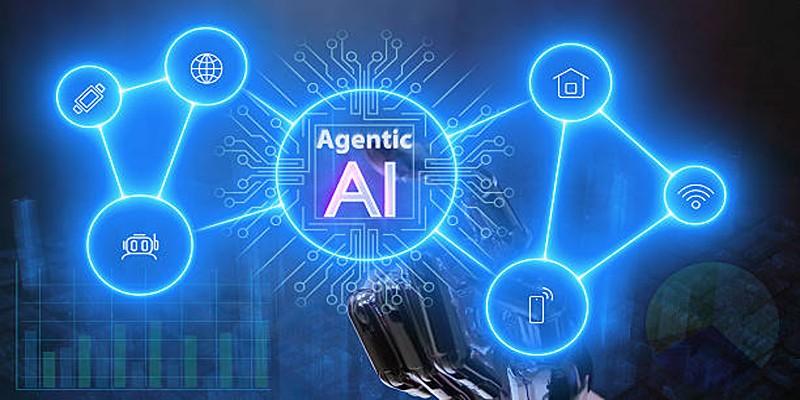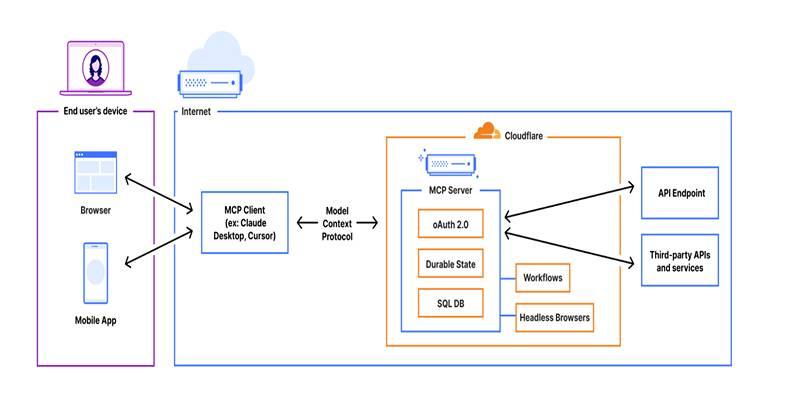The goal of network automation has always been to diminish the priority of manual work, the number of errors, and the capacity to scale in a dynamic context, but in practice, traditional instruments happen to fall short. Enter AI and Large Language Models (LLM) game-changing technologies that comprehend human language, learn and change over time, and make judgments all on their own. This innovation increases accessibility of automation and it opens up smarter, efficient network management to the IT professionals.
The Current State of Network Automation

The vast majority of organizations presently work using conventional systems of automation that take a scripted and predetermined program of action. The system is strong with routine and less successful at solving dynamic problems in networks or action that needs to change with unforeseen situations.
Network administrators frequently face challenges like creating complex scripts for basic tasks, maintaining extensive documentation, and manually resolving automation failures. Steep learning curves hinder adoption, while traditional automation falls short in managing modern networks. Multi-vendor setups, cloud-native architectures, and hybrid infrastructures demand flexible solutions that outdated frameworks struggle to handle effectively.
Understanding LLMs in Network Context
Large Language Models bring natural language processing capabilities to network automation, fundamentally changing how administrators interact with network infrastructure. Instead of writing complex scripts, network professionals can now communicate with their infrastructure using plain English commands.
These models understand context, can interpret ambiguous requests, and translate human intentions into precise network configurations. For example, an administrator might simply state "increase bandwidth for the marketing department during video calls," and the LLM can interpret this request, identify the relevant network segments, and implement the necessary changes.
LLMs also excel at documentation and knowledge management. They can automatically generate configuration documentation, explain existing network setups in plain language, and provide troubleshooting guidance based on current network states and historical data.
AI Agents: The Next Level of Intelligence
While LLMs handle language understanding and generation, AI agents add autonomous decision-making capabilities to network automation. These agents can monitor network conditions, identify issues, and implement solutions without human intervention.
AI agents operate continuously, learning from network patterns and adapting their responses over time. They can predict potential issues before they impact users, automatically optimize traffic flows based on usage patterns, and coordinate complex multi-step remediation processes across different network domains.
The key advantage of AI agents lies in their ability to handle exceptions and edge cases that traditional automation cannot address. When faced with unprecedented network conditions, these agents can reason through problems, consult multiple data sources, and develop novel solutions.
Real-World Applications
Intelligent Configuration Management
LLMs transform how network configurations are created and maintained. Instead of manually crafting configuration files, administrators can describe their requirements in natural language. The system then generates appropriate configurations, validates them against best practices, and implements changes while maintaining comprehensive audit trails.
This approach significantly reduces configuration errors and makes network management accessible to team members who may not have deep scripting expertise.
Predictive Network Optimization
AI agents continuously analyze network performance data, user behavior patterns, and application requirements to optimize network resources proactively. They can automatically adjust quality of service parameters, reroute traffic to prevent congestion, and scale resources based on predicted demand.
This level of intelligent optimization was previously impossible with traditional rule-based automation systems.
Automated Incident Response
When network issues occur, AI agents can immediately begin diagnostic procedures, correlate symptoms across multiple network elements, and implement remediation strategies. They can communicate with other systems, escalate issues when necessary, and provide detailed incident reports in natural language.
This capability dramatically reduces mean time to resolution and ensures consistent response procedures across different types of incidents.
Natural Language Network Queries
Network administrators can now query their infrastructure using conversational language. Questions like "Which devices are consuming the most bandwidth this week?" or "Show me all security policy violations from the past month" can be answered instantly without requiring complex database queries or report generation.
Implementation Strategies
Start with Low-Risk Applications
Organizations should begin their LLM and AI agent journey with non-critical network functions. Documentation generation, configuration validation, and network inventory management provide excellent starting points that deliver immediate value while allowing teams to build confidence with these technologies.
Develop Clear Governance Frameworks
Implementing AI-driven network automation requires establishing clear guidelines for when and how these systems should operate autonomously. Organizations need policies covering decision-making authority, escalation procedures, and human oversight requirements.
Invest in Data Quality
LLMs and AI agents depend heavily on high-quality data to make effective decisions. Organizations must ensure their network monitoring data, configuration management databases, and historical records are accurate and comprehensive.
Train Your Team
While these technologies make network automation more accessible, teams still need training on how to effectively communicate with AI systems and interpret their outputs. Understanding the capabilities and limitations of LLMs and AI agents ensures more successful implementations.
Challenges and Considerations
Security and Trust
Granting AI systems access to critical network infrastructure raises important security questions. Organizations must implement robust authentication, authorization, and auditing mechanisms to ensure these systems cannot be compromised or misused.
Building trust in AI-driven decisions also requires transparency in how these systems reach conclusions and the ability to trace all automated actions back to their triggering conditions.
Integration Complexity
Modern networks include equipment from multiple vendors, each with different APIs, configuration languages, and management interfaces. Successfully implementing LLM and AI agent automation requires sophisticated integration capabilities that can work across these diverse environments.
Skill Evolution
As these technologies mature, the skills required for network management will evolve. Organizations need to plan for retraining existing staff and hiring professionals who can work effectively with AI-augmented automation systems.
The Future of Intelligent Networks

The integration of LLMs and AI agents into network automation represents just the beginning of a broader transformation toward truly intelligent infrastructure. Future developments will likely include more sophisticated predictive capabilities, enhanced cross-domain automation, and deeper integration with business applications and processes.
Networks are shifting from reactive systems to proactive platforms that anticipate needs and optimize performance in real time. This transformation unlocks new applications and services reliant on ultra-reliable, self-managing infrastructure. Organizations adopting these technologies today will gain a competitive edge, seizing the immense opportunities that intelligent, adaptive networks offer for the future.
Conclusion
The integration of LLMs and AI agents with network automation is revolutionizing network management, offering smarter, more adaptable operations. By embracing these technologies, organizations can achieve greater efficiency, reliability, and intelligence. Start small by identifying key use cases, experimenting in controlled environments, and scaling gradually. This shift is an opportunity to reimagine and elevate your network operations for a competitive edge.












